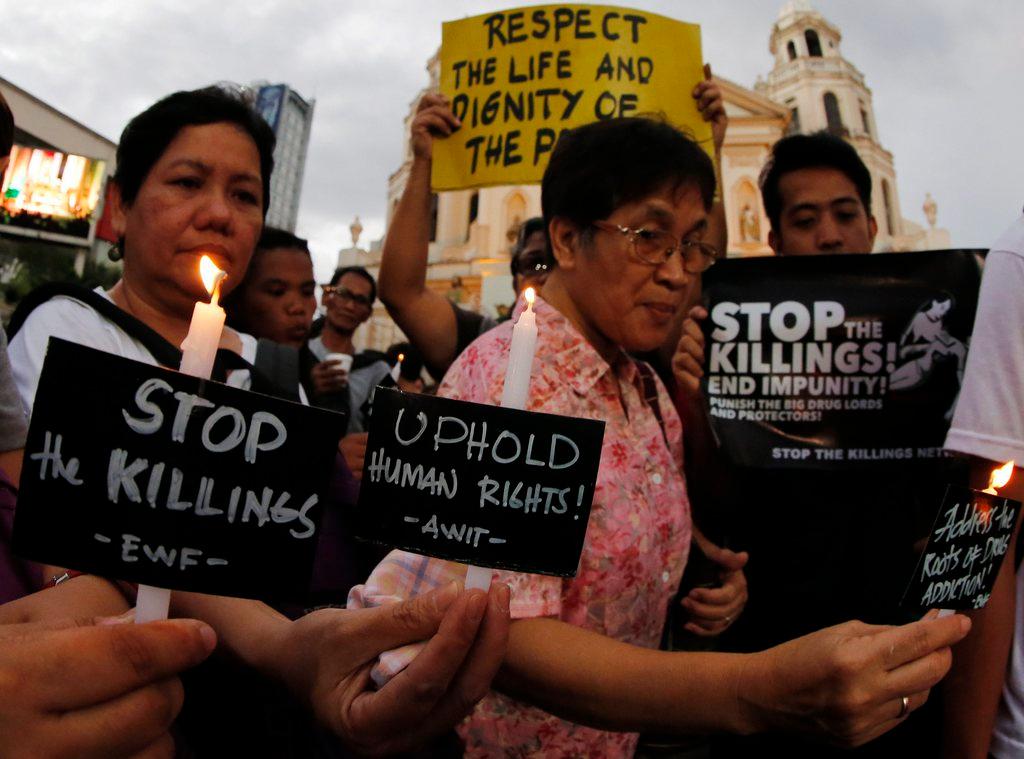Are human rights in crisis?
Fifty years of human rights: a look at the data suggests that little has improved. However, that does not imply that international human rights law is meaningless.
December 16, 1966 marks the beginning of human rights as we know them. When the United Nations General Assembly adopted the International Covenant on Civil and Political Rights and the International Covenant on Social, Economic and Cultural Rights, it created a system of rules in which states not only made legally binding commitments to observe a number of fundamental rights, but also accepted independent UN monitoring of their compliance with these commitments.
Yet the two covenants were only the beginning.

In the years that followed, ever more states became parties to ever more human rights agreements.
Moreover, whenever new states were founded, chances were high that the covenants would serve as a foundation for drafting those parts of the national constitution that deal with the fundamental rights of persons.
No congratulations
And yet, while much suggests that human rights have been a success story, crisis talk dominates.
Stephen Hopgood, an International Relations scholar at London’s School of Oriental and African Studies, has declared the coming years to be the “endtimes of human rights”.
A reviewer of his book agrees: that human rights norms are in crisis is no longer in dispute, she holds.
Eric Posner, Professor of International Law at the University of Chicago, speaks of the “twilight of human rights law” and recommends that Western states should no longer put their hopes in international treaties.
What evidence supports such a diagnosis?
First of all, there is the world around us. After 50 years, human rights continue to be violated all too often. The international community is a by-stander in Syria; religious fundamentalism has been on the rise; the United States has tortured after 9/11; European states have either been complicit in acts of torture or only half-heartedly responded to US violations of fundamental rights; Turkey might reintroduce the death penalty; and Switzerland and Britain consider withdrawing from the European human rights regime.
Yet crisis talk does not rely on impressions alone. Since the latter are always selective and can therefore mislead our judgment, social scientists do not tend to trust it. They propose to take stock in a more systematic way and rely on “hard” and objective data instead. The interpretation of such data usually leads to two arguments that support “the case against human rights”, as Posner has summarised his arguments in The Guardian newspaper (4 Dec 2014).
Too many?
According to the first argument, the proliferation of ever more rights undermines the “core” of human rights. If everything becomes a human right, the critics maintain, nothing is a human right.
At first sight, this argument might seem plausible, in particular as authors like Posner count no less than 400 different human rights in the various international treaties we have ended up with.
A second look, however, raises doubts. As even a short glimpse at the title of the newer treaties reveals, the main purpose of the Convention on the Rights of the Child, of the Convention on the Rights of Persons with Disabilities or of the International Convention on the Rights of All Migrant Workers and Their Families is not to invent new rights.
Instead, these agreements primarily serve to specify those rights that are already enshrined in the two covenants for particular – and often particularly vulnerable – groups. How far such rights ought to be specified might be contentious; but the claim that these treaties define many new human rights is difficult to defend.
PLACEHOLDERThe same holds for the argument that, as non-state actors become the objects of human rights demands, the core of human rights as liberal rights individuals hold against the state is undermined.
In 2011, the Human Rights Council has moved into uncharted waters when it adopted the UN Guiding Principles for Business and Human Rights; earlier this year, former UN Special Representative John Ruggie followed up with human rights recommendations for the world football governing body, FIFA.
Does that overburden the human rights agenda? I do not think so.
Instead, UN engagement with multinational corporations, first initiated by Kofi Annan at the end of the 1990ies, has sensitized corporate actors to human rights and enabled many changes on the ground.
Moreover, associations like FIFA – but also organisations like the UN itself – that have never dealt with human rights before slowly learn that their activities, too, can infringe upon such rights. The fact that they begin to systematically recognize, trace and manage human rights-related risks, however, is a sign of the success rather than of the failure of the international human rights project.
Data challenge
The second argument builds on a graph. It depicts the average human rights performance of all states since 1975 on a scale from 1 (very good performance) to 5 (very poor performance) known as the “Political Terror Scale”. The problem is that the graph remains flat: it simply does not show any sign of declining in recent years or decades. In fact, the values for the most recent years are even slightly higher than those for 1975.
Now, if 160 and more states sign and ratify ever more human rights agreements and if the objectively measured human rights performance of all states does not improve – does not this prove that the agreements are ineffective? Does not it demonstrate that 50 years of human rights treaties may have followed good intentions, but left no trace at all?
As with the first argument, a closer look reveals the difficulties.
While impressions can be selective, the problem with quantified data is that it does not speak for itself, but needs to be interpreted. Yet the most obvious interpretations are not always the most convincing. So what is wrong?
First, the counterfactual shape of our graph is unknown. Over the past 50 years, many human rights treaties may have been added. But the world has also changed in many other respects.

More
Swiss highlight human rights violations at UN meeting
Performance
As a result, it may well be that a world without UN bodies that monitor human rights would look significantly worse than the world we have – we simply cannot know it. The implication is clear: the graph alone contains little information about the performance of the treaties.
Second, the treaties tend to have an ‘information function’. This means that, not least because all states commit to regularly report about their human rights performance – a practice that commonly attracts ‘shadow reports’ from civil society groups – human rights agreements generate more information about human rights violations.
In addition, the capacity of civil society to obtain and distribute information about human rights violations has significantly increased since 1975.
New communications technologies help activists to network across borders at no cost, and information about abuses is much more difficult to keep within a country’s borders today than it was in the past. No surprise, one might be inclined to say, the graph is not declining.
Compliance
A third caveat seems even more important. It suggests that what we consider to be “compliance” with human rights commitments may have changed over time, too.
Consider the Swiss case. In the early years, the Political Terror Scale assigns the best value of 1. But between 2002 and 2008, the value suddenly drops to 2 for most years – the same value given, for instance, to the German Democratic Republic in 1985, 1988 and 1989.
But what has changed here – the practice or the standard we use to evaluate the practice? A closer look at the annual human rights report prepared by the State Department reveals that, in 2008, a number of cases of police violence in the canton of Geneva provide the reason for assigning the value of “2” instead of “1”.
While these cases are confirmed and might indeed constitute violations of fundamental rights enshrined in international treaties, it seems plausible to imagine that the same cases would not have been discussed in the report under the label of “torture and other cruel, inhuman or degrading treatment or punishment” in the 1970ies because the understanding of these concepts may have been narrower at that time.
If this were true, however, what looks like a decline in the graph would actually represent an improvement.
Overcoming the worst and most systematic forms of torture in many countries would, on this reading, have been a precondition for the international human rights regime to devote its energy to addressing the “second worst” problems. The bar was raised over time, and for good reasons – but the fact that it could have been raised would yet again be a sign of accomplishment rather than failure.
Finally, the graph contradicts much of the knowledge we have gained from detailed case studies.
Under favourable scope conditions, these studies suggest, the combined pressure “from above” –the international human rights community – and “from below” – domestic human rights activists – has frequently led to the gradual acceptance and implementation of international human rights norms, and UN monitoring has contributed to such processes in important ways.
Certainly, normative pressure works slowly in most cases, and it also does not work at all in some cases. But the important message is that it works on a regular basis.
Real crisis of human rights
So are human rights in good shape after 50 years? This conclusion might be a premature, as well.
But they are very probably not in crisis for the reasons that many give and there are thus few reasons to end our support for international human rights treaties.
Nevertheless, it seems evident that the successes of the international human rights project have been strongest in the Western hemisphere: first to Latin America, then to eastern Europe and – to a much lesser extent – in the post-Soviet region. In contrast, human rights have failed to inspire the same passions in Africa and Asia.
Against the background of global power shifts, this presents a major challenge for the next 50 years. The challenge consists in turning the universal aspiration of the human rights project into a political reality. In practice, this implies three requirements.
First, Western states will need to take human rights “dialogue” more seriously. Rather than understanding their role exclusively as a “teacher” of human rights norms, they will also need to listen to critique from others.
When the UN sends its special representative for the right to education on a field visit to Germany in 2006, the public response to his more critical comments was largely confrontational.
Who is he to criticize us, and don’t they have any problems in Costa Rica, the country of origin of the special representative? Reactions like these have earned Western states the reputation of human rights arrogance – a reputation that hinders rather than helps the promotion of human rights elsewhere.
Social and economic rights
Second, Western states will need to give more systematic consideration to social and economic rights. To limit their duties, a more inclusive agenda of human rights could build on so-called “basic rights”, the fulfilment of which constitutes a necessary condition for the enjoyment of all other rights.
In addition to the right to physical security, political philosophy commonly counts the right to subsistence – and hence to material goods like shelter, clothes, food and clean water – among such rights.
Third, some room for interpretation is needed. The rights enshrined in the two covenants were formulated in broad terms for good reasons.
If we recognize these reasons, the ambition of international human rights law needs not be that every state understands every right in exactly the same way. Instead, cultural diversity must also have some role in human rights, although we might – and should indeed – argue about its precise role as well as over where the idea of human rights itself sets boundaries for diversity.
Maybe, then, this last point is the fundamental one.
Maybe the language of human rights, powerful on the one hand, but also capable of silencing the opponent in a political argument, has made it impossible for us to argue over human rights.
If this is true, rediscovering the political nature of human rights might be a real chance. For a human rights project in which Western and non-Western states meet on a level playing field will require some adjustments anyway, if only because some states had little means to contribute to the catalogue of human rights 50 years ago.
The views expressed in this article are solely those of the author, and do not necessarily reflect the views of swissinfo.ch.

In compliance with the JTI standards
More: SWI swissinfo.ch certified by the Journalism Trust Initiative











You can find an overview of ongoing debates with our journalists here . Please join us!
If you want to start a conversation about a topic raised in this article or want to report factual errors, email us at english@swissinfo.ch.